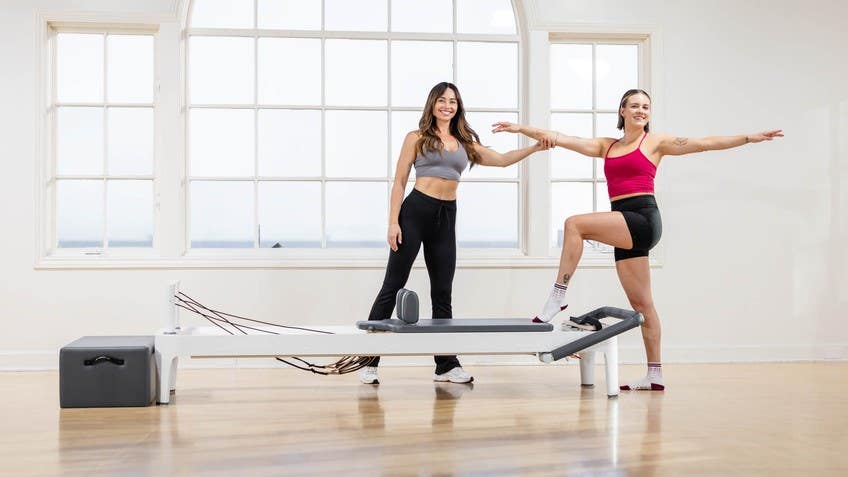Neck mobility may not be something you think about often, yet we use (and abuse) our necks more than we might realize. Think about this scenario: your phone buzzes with a new text message, and you look down at the screen, open the notification, and begin to scroll. Before you know it, 20 minutes have passed, you’re still caught in a scroll hole and now your neck hurts.
The feeling of soreness, tension, or stiffness is not in your head. It’s called “tech neck,” a modern-day issue that can lead to chronic pain, limited range of motion, or even spinal-related injuries.
While this is incredibly common, it doesn’t have to be your reality. If you’ve noticed aches, pains, or restricted mobility in your neck, here’s what you need to know—and how you can start finding relief.

Tech Neck: The Science
Tech neck is the forward pronation of your cervical spine (neck region) where it connects to the brain stem. This causes an unnatural posture in which the spinal vertebrae round, the shoulders slump, and the chin tucks into the chest. While you’re in this position, the tendons, ligaments, and muscles of your neck and shoulders can become tight, strained, or compressed.
Not only does this exert pressure on the neck itself, but it can also provoke tension headaches or musculoskeletal pain in other areas of the body. Researchers from Harvard Medical School estimate that seven in 10 people will deal with this issue at some point in their lives, and while mobile device usage is not the sole culprit, it is a frequent cause.
In fact, a recent study in the PLOS One Journal found a strong correlation between the amount of time someone spends looking at a phone and the severity of their neck or spinal discomfort.
If tech neck persists untreated over a long period of time, your risk of certain injuries and other health concerns could also escalate. According to the International Journal of Environmental Research and Public Health, neck pain is the eighth most common source of disability among 15–19-year-olds who, uncoincidentally, have grown up in a world of ubiquitous smartphone use.
Continual damage to the cervical spine as a result of tech neck can eventually lead to one or more of the following complications:
- Disc protrusion
- Chronic misalignment
- Acute jaw pain
- Dizziness or vertigo
- Ear or vision problems
- Hand or foot tingles
- Joint inflammation
- Ataxia (lack of motor control)
- Cardiac or lung issues
Here’s the good news: you don’t have to live in pain, or be at risk for these complications. Pilates is a powerful tool for soothing your discomfort and strengthening your neck mobility.
Neck Mobility Stretches to Ease Pain and Tightness
Pilates is one of the best ways to build strength, improve mobility, and ease any tension you experience in your neck. These gentle but effective exercises will stabilize the muscles, improve alignment and posture, alleviate stiffness or soreness, and protect against injuries.
Chin Tucks
Sit comfortably on your mat or in a chair. Take your fingers to your chin and do a little push on the chin to tuck the chin toward the neck and bring it back up. Notice how the skull slides back and up at the top of the spine and then back down. This helps you shift out of the forward neck posture.
Pilates Chest Lift
Lay on your back, knees bent, and feet flat on the ground. Interlace your fingers and place your hands behind your head to support your neck. Bring your elbows into your peripheral vision and slide your shoulders away from your ears. Take an inhale, and as you exhale, create a slight tuck of your chin and curl up off the ground. Imagine that you’re folding in the middle of your rib cage as you move up. Lengthen your spine with control back down to starting position.
Swan Prep
Lie on your stomach, forehead gently resting on the mat, hands under your shoulders, and toes flat on the ground. Imagine there’s an ice cube under the belly button. Tighten your core by raising your belly button above the ice cube so it doesn’t melt. Inhale, lengthen your spine toward the end of your mat and lift just slightly into the upper back. Imagine that you have an orange or apple between your chin and your chest as you slide your shoulders down away from your ears.
Remember to use your upper back muscles, sliding your shoulder blades down into your back pockets and opening up across your collarbone.
Gentle Neck Movements
Sitting straight up and down, gently shift your gaze from side to side. Afterward, gently nod your head forward and backward as well. You can easily do this movement throughout the day in your chair to help ease any unwanted tension or straining.
Boost Neck Mobility and Reduce Pain
Chronic pain doesn’t have to be a normal part of life. You can ease soreness, tightness, and pain, in your neck and otherwise, with Pilates. In the Lindwell app, you’ll find a variety of workouts that target neck pain. All of these allow you to create relief and strengthen to avoid future discomfort. Work these stretches into your daily and weekly movement routine to prioritize neck mobility that supports the habits of your daily life.



